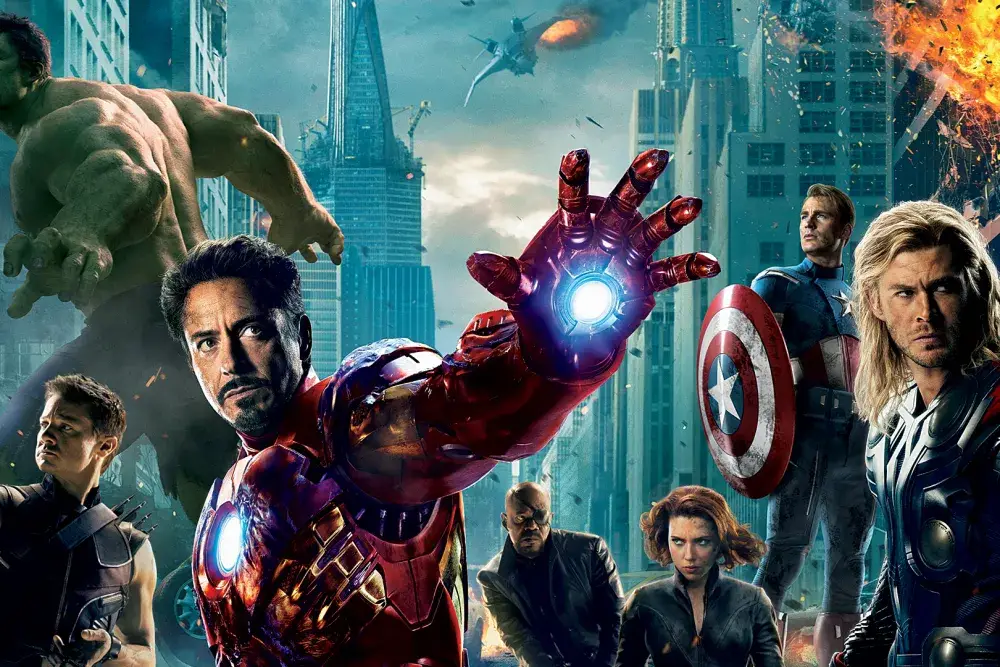A Quiet Passing in the Utah Mountains
The news broke quietly, yet its reverberations were instant. In the stillness of the Utah mountains, a man whose face once filled cinema screens around the world slipped away in his sleep. He was 89. His death did not come with spectacle or controversy. It came, instead, with the grace and dignity that had long defined him — an exit befitting one of the greatest icons Hollywood ever produced.
Though millions of fans today may know him for a surprising late-career turn in the Marvel Cinematic Universe, his story stretches far deeper. His life was a tapestry woven from classic films, Academy Awards, a festival that transformed independent cinema, and a passion for both art and activism.
This is the story of Robert Redford.
A Childhood Far from the Spotlight
Born Charles Robert Redford Jr. in Los Angeles in 1936, his childhood bore little hint of the international fame that would follow. The son of a milkman, Redford grew up in a modest working-class family. Like many children of post-Depression America, he understood both struggle and resilience from an early age.
He attended the University of Colorado, excelling as an athlete before his life took an unexpected turn. Struggles with drinking and a restless spirit led him to Europe, where he wandered and searched for purpose. He eventually returned to the United States, enrolling at the American Academy of Dramatic Arts in New York.
It was there, on the stage and under the guidance of acting coaches, that he discovered the craft that would define his life.
Breakthrough on Stage and Screen
In the late 1950s and early 1960s, Redford paid his dues with small television parts and stage roles. His breakout came on Broadway with “Barefoot in the Park”, Neil Simon’s romantic comedy that showcased his charm, comic timing, and ability to connect with audiences.
Hollywood soon followed. By the late 1960s, Redford had moved from promising newcomer to full-blown star.
Butch Cassidy, The Sting, and Stardom
The film that changed everything arrived in 1969: Butch Cassidy and the Sundance Kid. Paired with Paul Newman, Redford played the outlaw Sundance with equal parts charm, swagger, and quiet menace. The chemistry between Redford and Newman became legendary, cementing the film as one of the most beloved westerns ever made.
Four years later, the duo reunited for The Sting (1973), a stylish caper that won the Academy Award for Best Picture. Audiences adored the pair, and Redford’s place in the pantheon of 1970s Hollywood icons was secured.
From there, his resume read like a decade’s worth of classics: The Way We Were (1973) alongside Barbra Streisand, The Great Gatsby (1974), Three Days of the Condor (1975), and All the President’s Men (1976), where he played journalist Bob Woodward unraveling the Watergate scandal.
By the end of the 1970s, Robert Redford wasn’t just a star. He was a symbol.
The Director Emerges
In 1980, Redford stunned Hollywood by stepping behind the camera. His directorial debut, Ordinary People, was anything but ordinary. The searing family drama won four Academy Awards, including Best Picture and Best Director.
It was the beginning of a second career. As a director, Redford proved as skilled as he was in front of the camera. His later works included A River Runs Through It (1992), which introduced audiences to a young Brad Pitt, and Quiz Show (1994), a drama about a game-show scandal that earned widespread acclaim.
Directing gave Redford new creative control and confirmed his status as one of Hollywood’s most versatile talents.
Sundance: A Revolution in Independent Film
Perhaps his most enduring legacy, however, lies not in a single film but in a festival.
In 1984, Redford co-founded the Sundance Institute and launched the Sundance Film Festival in Utah. At the time, independent cinema was struggling to find an audience. Hollywood’s studio system dominated theaters, leaving little room for unconventional voices.
Redford’s festival changed that. Sundance became the premier showcase for American indie filmmakers. Careers were launched there — Quentin Tarantino, Steven Soderbergh, the Coen Brothers, Darren Aronofsky, and many others owe their early breakthroughs to the platform Redford created.
More than an event, Sundance became a movement: proof that cinema didn’t have to be polished by studios to be powerful.
An Activist at Heart
Beyond film, Redford was a committed environmentalist and progressive activist. He used his platform to champion renewable energy, conservation, and indigenous rights.
He served as a trustee of the Natural Resources Defense Council and was a vocal opponent of projects like the Keystone XL pipeline. For Redford, activism wasn’t a side project — it was as integral to his identity as acting or directing.
Later Career and Surprising Roles
As he aged, Redford continued to choose challenging projects. In The Natural (1984), he embodied the mythic American baseball hero. In Out of Africa (1985), he starred opposite Meryl Streep in an Oscar-winning romantic epic.
In 2013, he earned praise for All Is Lost, a nearly wordless survival story about a sailor stranded at sea. Critics hailed his physical and emotional performance as one of the finest of his career.
Then came a surprise: the Marvel Cinematic Universe.
The Marvel Turn
In 2014, at age 77, Redford joined the cast of Captain America: The Winter Soldier as Alexander Pierce, a senior S.H.I.E.L.D. official who is ultimately revealed as a Hydra leader.
The role shocked fans — why would one of Hollywood’s most respected dramatic actors appear in a superhero film? But Redford brought gravitas to the part, portraying Pierce with calm menace, embodying the idea of quiet power corrupted.
He reprised the role briefly in Avengers: Endgame (2019), marking one of his final screen appearances. For a generation raised on Marvel, it was their introduction to Redford — an elder statesman lending weight to a blockbuster saga.
Retirement and Reflection
In 2018, Redford announced that The Old Man & the Gun would be his final major acting role. Fittingly, it told the story of an aging bank robber who couldn’t give up the thrill of the chase. Critics saw it as a graceful farewell — an actor looking back on a lifetime defined by charisma, rebellion, and adventure.
Though he stepped away from acting, Redford remained involved with Sundance and continued his activism.
The Final Years
By his late 80s, Redford was rarely seen in public. He lived quietly in Utah with his wife, painter Sibylle Szaggars, enjoying the mountains he had long called home.
On September 16, 2025, his publicist confirmed the inevitable: Robert Redford had died peacefully in his sleep, surrounded by family. No cause of death was immediately given.
Tributes Pour In
The reaction was immediate and overwhelming.
-
Meryl Streep called him “one of the lions,” praising his artistry and humanity.
-
Barbra Streisand remembered their time on The Way We Were, writing: “Bob was a dream partner — generous, present, and brilliant.”
-
Directors at Sundance expressed gratitude for the opportunities his festival had created, crediting him with shaping modern independent cinema.
-
On social media, fans around the world remembered him as both “the last movie star” and “the man who made indie films possible.”
Even Marvel fans paid tribute, recalling how he gave unexpected weight to Alexander Pierce, turning what could have been a stock villain into something memorable.
The Legacy of a Legend
Redford’s legacy is multi-layered:
-
As an actor, he embodied the golden age of Hollywood masculinity: rugged, charming, and principled.
-
As a director, he proved that storytelling could be intimate and personal.
-
As a festival founder, he changed the trajectory of independent cinema.
-
As an activist, he used his fame to champion causes larger than himself.
Few in Hollywood have worn so many hats — and fewer still have worn them as gracefully.
Conclusion: A Life Larger Than Film
Robert Redford’s death marks the end of an era. Yet his influence lingers everywhere: in the films he made, the filmmakers he championed, and the activists he inspired.
From Butch Cassidy to Ordinary People, from Sundance to Avengers: Endgame, his career defied limits. He showed that an actor could become a director, that a director could become a movement leader, and that cinema could be both entertainment and art.
As the lights dim on his remarkable life, one truth remains: Robert Redford was more than a star. He was a storyteller, an innovator, and a champion. His final curtain call leaves a silence in Hollywood — but his work ensures his voice will never fade.
Robert Redford (1936–2025). Rest in peace.

Adrian Hawthorne is a celebrated author and dedicated archivist who finds inspiration in the hidden stories of the past. Educated at Oxford, he now works at the National Archives, where preserving history fuels his evocative writing. Balancing archival precision with creative storytelling, Adrian founded the Hawthorne Institute of Literary Arts to mentor emerging writers and honor the timeless art of narrative.
